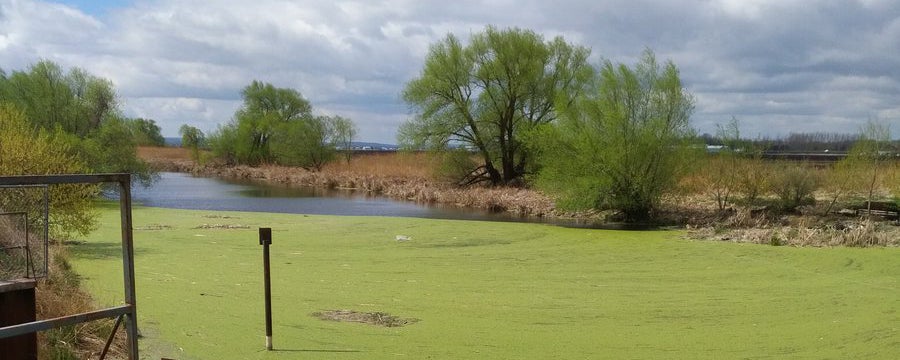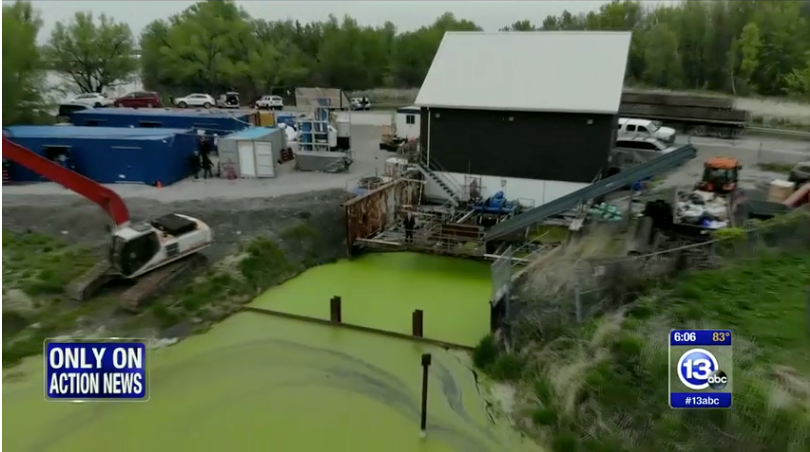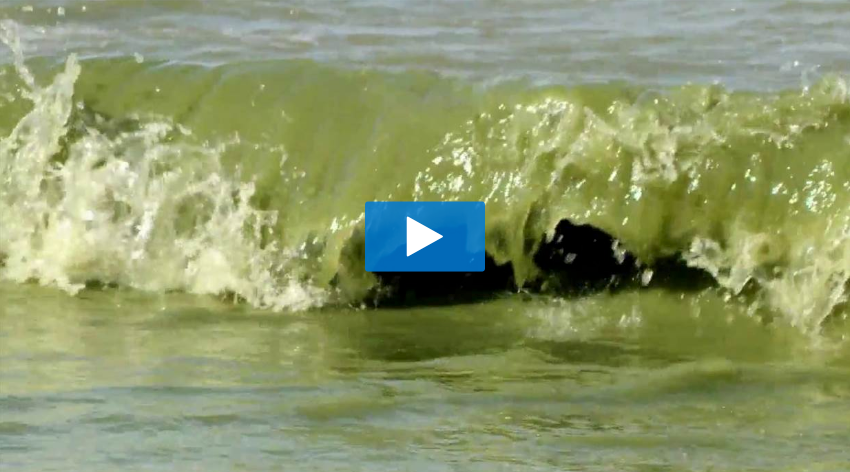
The largest water prize of its kind, it will spur innovation and uncover new technologies, showing the world just how serious phosphorus water pollution is. The $10 million grand prize will go to the most cost-effective, scalable technology that thoroughly removes and recovers phosphorus — a nutrient that stimulates growth of harmful algal blooms — from freshwater bodies.
The PhosphexTM research team, led by Water Institute members David Blowes and Carol Ptacek, has been in the midst of rigorous field testing for the past three months, in an effort to determine whether a steel industry waste by-product can successfully, and cheaply, remove phosphorus from water in one of the most heavily farmed (and phosphorus-laden) areas in the province.
But for Steven Holland, the team’s project manager, part of the team’s collective drive comes from a genuine desire to solve a critical worldwide water problem:
“Elevated phosphorus concentrations are recognized as a threat to water quality in Ontario, across Canada, and elsewhere globally. This is truly a worldwide challenge. This competition provided us with a unique opportunity to test the PhosphexTM technology (and ourselves!) against challenging field conditions — high turbidity water, variable influent phosphorus concentrations, cold temperatures, and lots of algae, duckweed, and suspended sediments.” Knowing that their treatment system is removing phosphorus and is improving water quality, he says, is a reward, in itself.
What steel industry waste has to do with clean water may not be apparent, at first glance. Yet, one of the key attributes of the PhosphexTM technology is that the principal treatment media is a waste by-product of the steel industry. It uses a material known as basic oxygen furnace slag to remove phosphorus from water, offering two significant advantages: 1) the beneficial use of a waste by-product, and 2) lower capital costs of the treatment media, provided to them, free-of-charge, by their industry partner, Stelco. At the end of the trial, Stelco will reuse the slag for other beneficial purposes.
All competing teams were asked to demonstrate their pilot technologies for a period of three months, adhering to specific water-quality parameters, under conditions set by the challenge administrators. A three-month flow regime was set under cold conditions in order to mimic dynamic conditions found in real field applications.
The team now looks optimistically forward to the next judging stage, where up to four winning teams will be selected to move forward to the final round.
"This water prize is not just about phosphorus, it's about clean water," Melodie Naja, chief scientist at the Everglades Foundation is quoted as saying on the Barely Prize website. "It is about transforming the way we solve one of humanity’s greatest challenges: how to secure fresh water for future generations."
In addition to Blowes, Ptacek and Holland, the team also includes Jeff Bain, Krista Elena, David Wilson, Filip Budimir, Julia Jamieson-Hanes, Sara Fellin, Laura Groza, YingYing Liu, Ismail Hussain, Joy Hu, Bob Ingleton, Paul Johnson, and co-op students Graydon King, Cameron Boyes, Cameron Wood, Morgan De Kroon, Daniel Birch and Lisa Kester.
In the media
- Solution to global threat being floated in Lake Simcoe watershed, Simcoe.com
-
George Barley Prize finalists begin three-month pilot at Lake Simcoe, Ontario Water News

